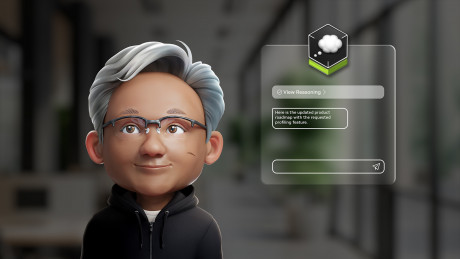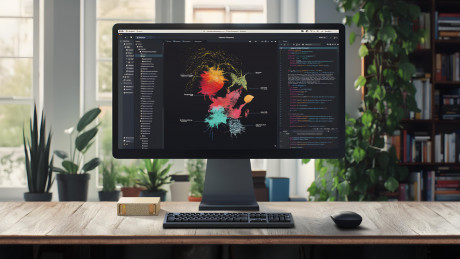NVIDIA Takes AI Robotics to New Heights With Open Dataset and AI-Powered Robot
- NVIDIA launched a huge open-source dataset for AI development in robotics and self-driving vehicles.
- Dataset offers 15 terabytes of data and thousands of training scenarios.
- New AI technologies like Omniverse, Cosmos, and Newton physics engine showcased.
- Groot N1 model for robotics officially open-sourced.
- Blue, NVIDIA’s AI-powered robot, demonstrated using cutting-edge tools.
NVIDIA’s making big moves in the world of AI robotics. During GTC 2025, they not only announced a massive open-source dataset aimed at boosting AI training for robots and autonomous vehicles but also showed off a new AI-powered robot named Blue—all part of their ambitious plans to revolutionize robotics.
NVIDIA just released a huge dataset for AI developers, making it easier than ever to build smart robots and self-driving vehicles. Available on Hugging Face, this open-source goldmine includes 15 terabytes of data with more than 320,000 robotic training scenarios and almost 1,000 OpenUSD assets for building realistic AI environments. They’re also rolling out clips of different traffic situations from over 1,000 cities across the U.S. and parts of Europe.
This dataset’s designed to help AI developers pretrain and fine-tune their models, whether they’re building robots for warehouses or autonomous vehicles that need to navigate chaotic urban streets. And big-name labs like UCSD, Berkeley, and Carnegie Mellon are already diving in.
NVIDIA's "Blue" - an Adorable AI-Powered Robot
The big reveal of GTC 2025 wasn’t just the dataset—it was also NVIDIA’s AI-powered robot Blue. CEO Jensen Huang showed off how Blue uses the company’s latest AI tools to tackle real-world tasks with super-realistic training simulations.
Nvidia’s AI robot ‘Blue’ stuns with live interaction
Nvidia CEO Jensen Huang unveiled groundbreaking AI advancements at the company’s developer conference, introducing the AI-powered robot 'Blue'.
Blue runs on NVIDIA’s new system, which includes Omniverse—an AI platform for building digital environments—and Cosmos, a generative AI model that creates endless training scenarios. What’s the point? Making AI training faster, better, and more accurate.
The CEO highlighted how these tools are designed to address some of the biggest challenges in AI robotics: creating data, building reliable AI models, and scaling them to be smarter and more efficient.
Meet Newton, The Game-Changing Physics Engine
NVIDIA also introduced Newton, a powerful physics engine developed with DeepMind and Disney Research. Newton’s designed to handle incredibly detailed simulations, including fine motor skills, tactile feedback, and realistic movements. Plus, it’s built to work with Mujoko, making it super compatible for researchers already using that platform.
What’s more, Newton is GPU-accelerated, which means training AI models happens in what NVIDIA calls “super real-time.” That’s a game-changer if you’re trying to teach a robot how to move and react like a human.
Groot N1 Goes Open-Source
NVIDIA’s also giving developers a gift by making their Groot N1 model open-source. That means anyone can use it to build their own AI systems for robotics, which should seriously speed up progress in the field.
So what’s next?
NVIDIA’s clearly going all-in on making AI smarter and more capable of handling real-world tasks. With their open dataset, powerful new tools like Newton, and game-changing AI models like Cosmos, they’re setting the stage for a future where AI-powered robots can handle everything from warehouse sorting to surgical assistance.
Published: Mar 21, 2025 at 11:14 AM

